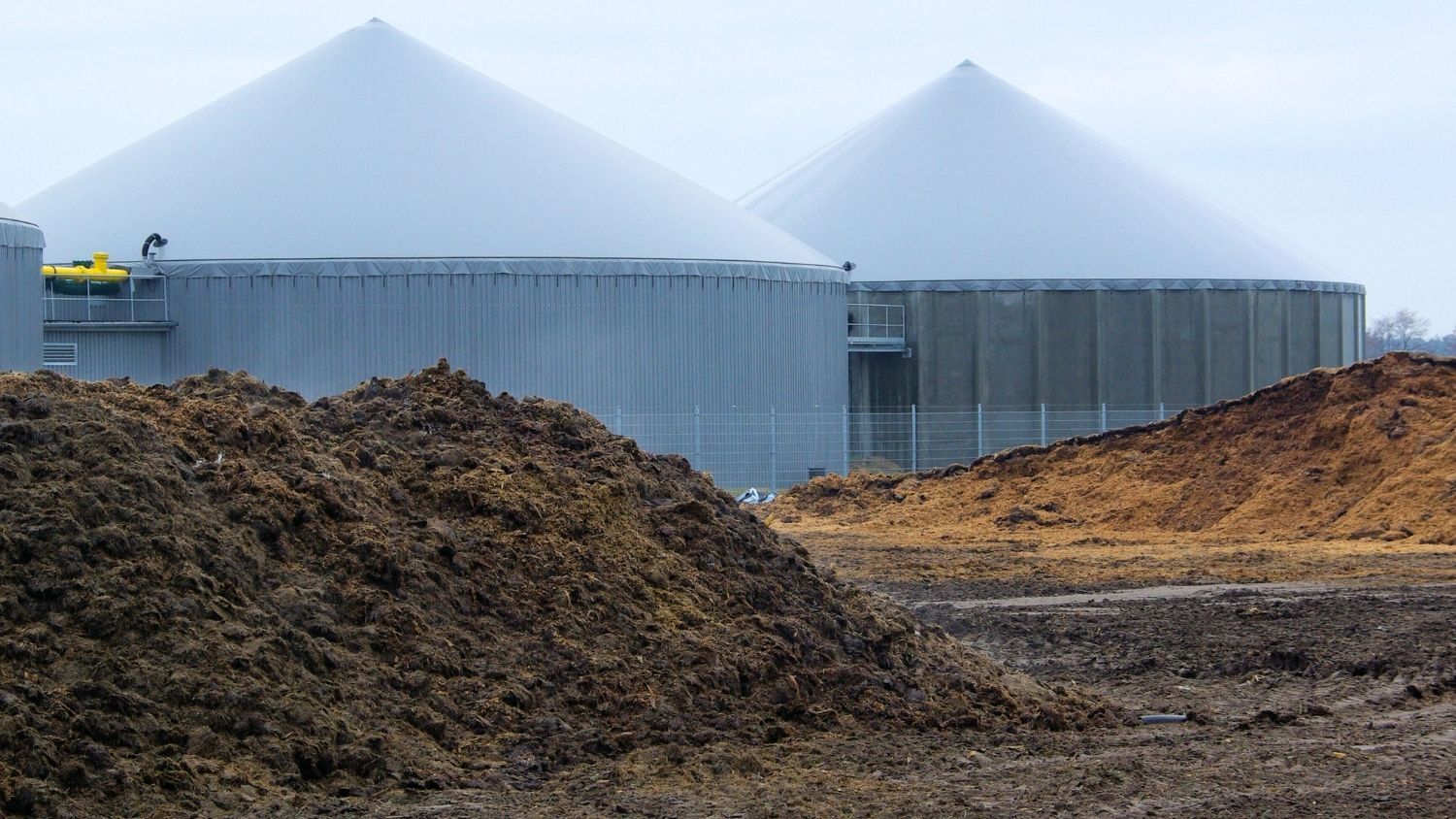Dehumidification technologies
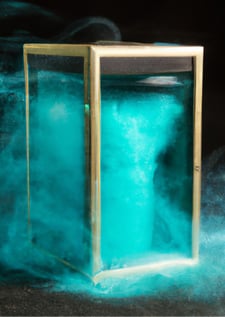 Many industrial processes require specific relative humidity levels for which dehumidification is needed. Three common dehumidification methods are based on condensation, absorption, and adsorption.
Many industrial processes require specific relative humidity levels for which dehumidification is needed. Three common dehumidification methods are based on condensation, absorption, and adsorption.
Condensation: Air can only retain small amounts of moisture at low temperatures. This technology reduces the moisture content in the air by lowering the temperature below the dew point; if the air temperature drops further to the dew point, moisture condenses and can be removed. The condensation method works best for dew points above 4 °C and offers a simple solution since it requires no additional equipment.
Absorption: This method is based on a chemical absorption process where the moisture is captured by a chemical absorbent such as lithium chloride in a brine solution. In this case, the liquid desiccant is sprayed in the air stream to absorb the moisture. The solution containing the lithium chloride is then regenerated through heating to remove the moisture content from it. One benefit of this method is that the liquid desiccant acts also as a biocide agent, reducing bacterial and virus contamination.
Adsorption: In the adsorption method, solid desiccant materials trap the moisture in the air, a low vapor pressure area is generated on the surface of the desiccant, and the water molecules move from the air to the material. The most frequently used desiccants include silica gel, activated alumina, and molecular sieve. More recently, other adsorbents, such as Metal-Organic Frameworks (MOFs), have emerged as an alternative.
Choosing a dehumidification technology
The selection of an appropriate method for the dehumidification process depends on the air stream conditions from which moisture needs to be removed. For instance, condensation technologies are suitable when the dew point is as low as 4 °C. Below that, the condensation system becomes inefficient. The condensation method is widely used due to its low capital and operational cost. However, they require high maintenance to avoid leakage in the cooling system.
Absorption technology can work for requirements where the air conditioning should range from 18 to 80% RH. The absorption method offers a good relative humidity control of ±1% RH, the additional biocide effect of the absorbent, and can operate at air temperatures down to -50 °C. However, absorption uses corrosive liquid desiccants that can be toxic if they leak into the supply air stream. Since their capacity is related to the amount of liquid, they may require large pumps increasing energy consumption.
Adsorption systems can provide the lowest relative humidity levels, even when the air moisture has a dew point as low as -73 °C, and have the flexibility to use different energy sources, including waste heat, hot water, gas, and steam for the regeneration step. Adsorbents possess higher water retention capacity than liquid desiccants but require higher temperatures for regeneration. To overcome the high energy consumption of typical adsorption systems, relatively new materials like MOFs are being developed, showing promising results as an alternative method with low energy operation consumption.
Adsorption dehumidification system
In adsorption systems, the dehumidification and the regeneration processes are simultaneous in a desiccant wheel. The wheel is divided into two parts; in one region, the humid air passes through the adsorbent to reduce moisture; in another, hot air is passed to remove the water from the desiccant.
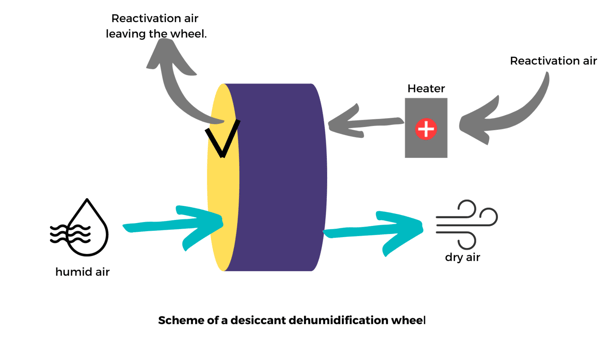
MOFs are a novel class of porous materials with high surface areas and large adsorption capacity. MOFs have been proposed for their utilization in adsorption dehumidification systems due to their large water uptake capacity and low regeneration temperatures compared to other desiccants, such as silica gel, zeolites, and activated alumina. Besides these features, MOFs offer a particular advantage in their versatility for the framework design, the diverse choice of ligands facilitates the modulation of the hydrophobicity and adsorption kinetics. For instance, recent studies have shown that MOFs possess a dehumidification capacity that is 40% higher than commercially available desiccant wheel materials.
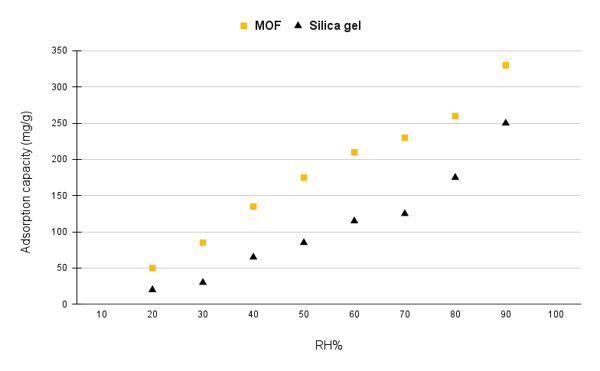
Besides their higher dehumidification capacity, MOFs offer the advantage of good thermal and hydrothermal stability and low regeneration temperature. The excellent reversibility of the dehumidification capacity and high dehumidification-regeneration rate make them promising alternative materials. For instance, Fe-based MOFs when used for climate control systems can be cycled up to 2000 times showing a capacity loss of only 4.5%. In another study, coated MOFs were tested in hydrothermal stress tests (temperature swing between 15 and 95 °C) with over 70'000 cycles and showed a water uptake decrease of only 5-10%. In MOFs, the super-microporous structure enhances the dehumidification-regeneration rate, allowing faster water diffusion in both the adsorption and desorption steps.
If you are interested in MOFs, please visit our previous blogs. Contact us, we can help you choose the right MOF for your applications.


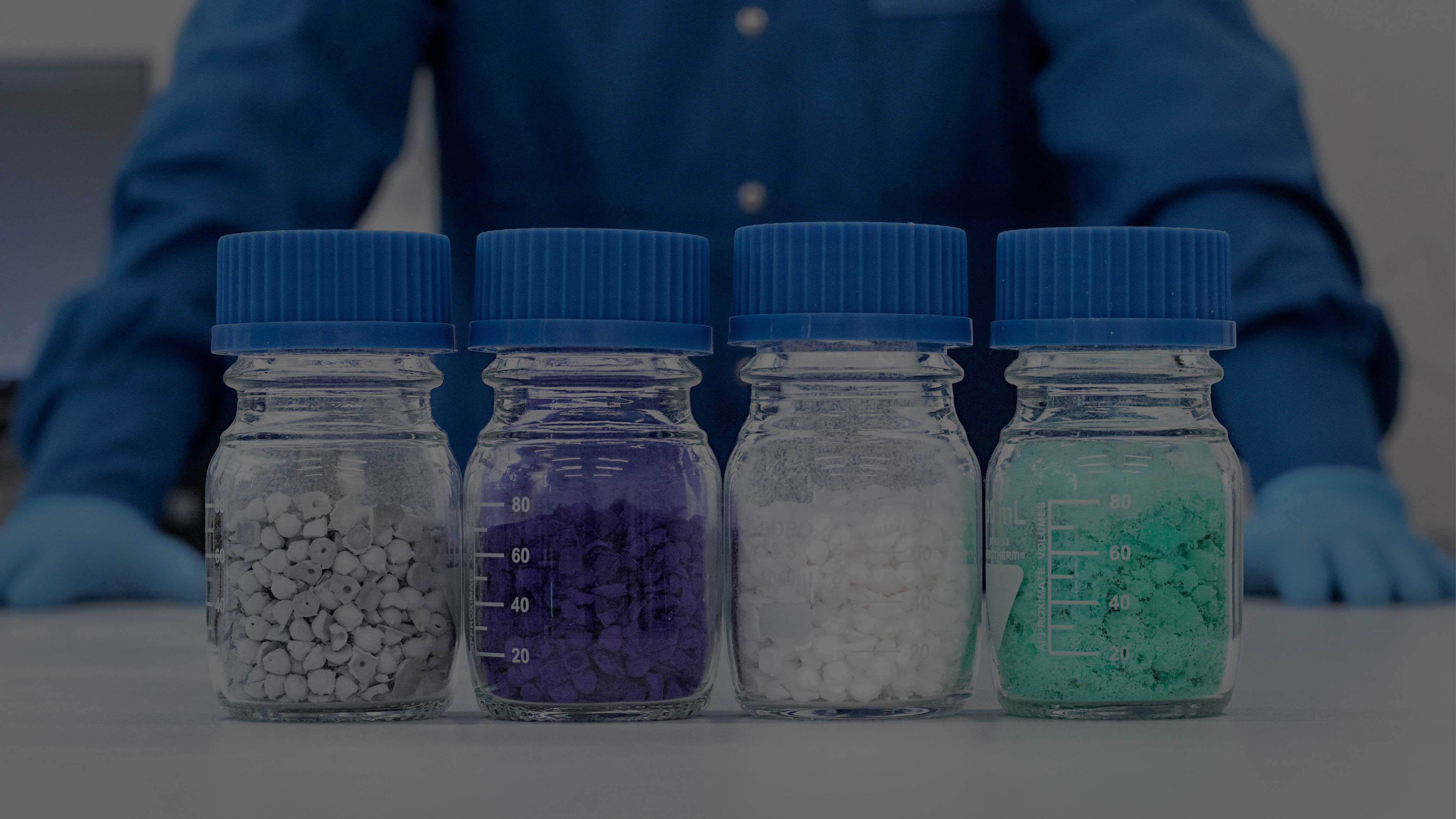

.jpg)
